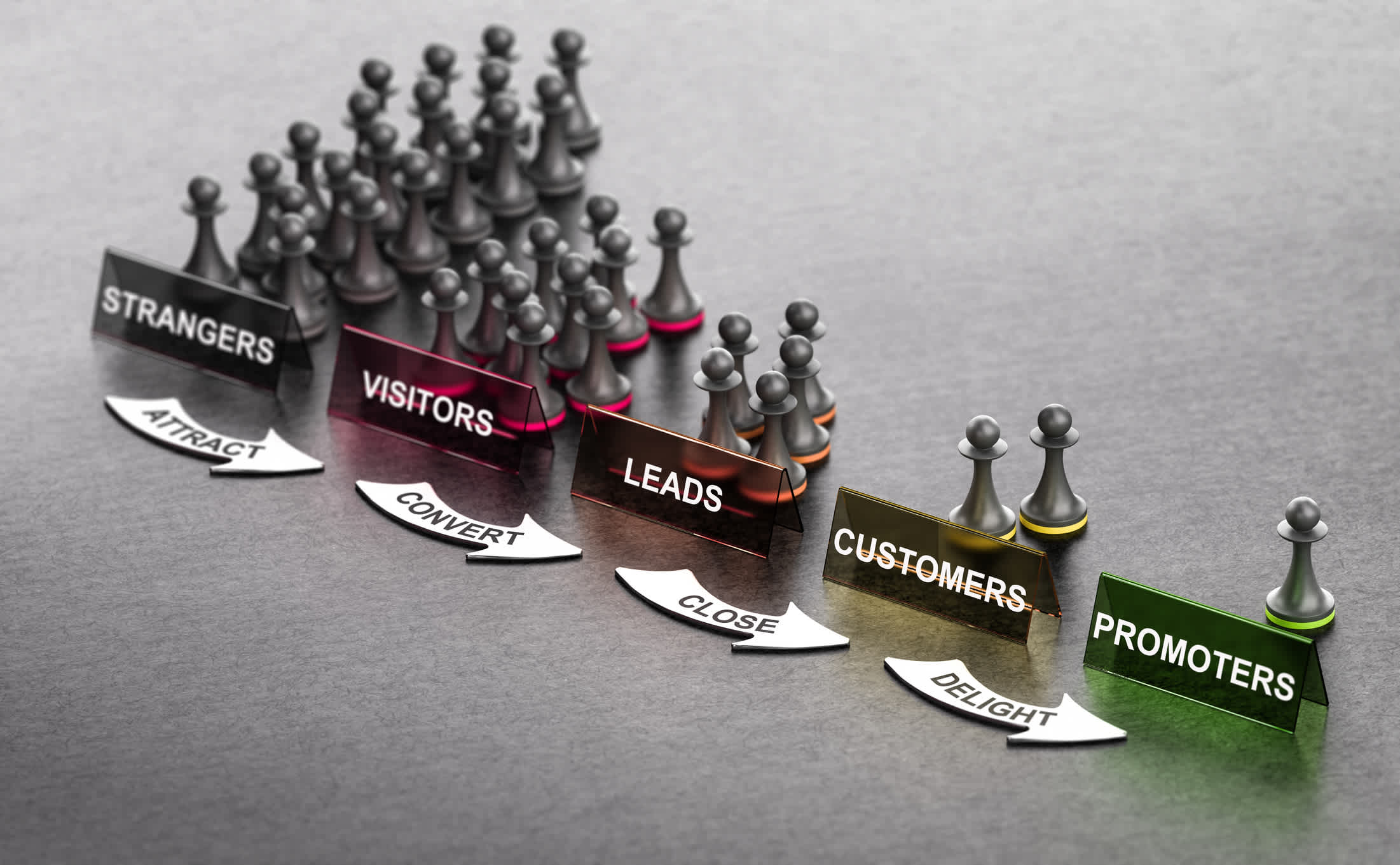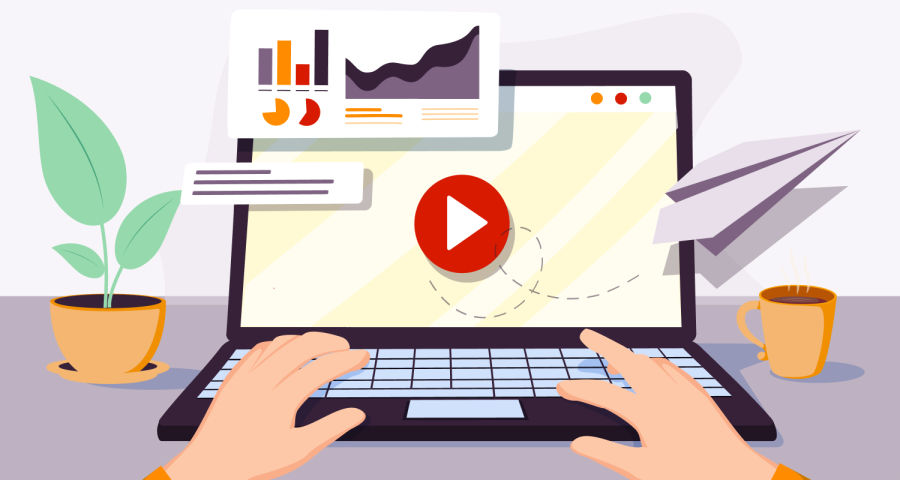//
Feb 19, 2024
Mastering Inbound B2B Lead Generation: A Strategic Review
Mastering inbound lead generation is a key strategy in today’s complex business ecosystem.
As companies navigate the path to powerful business outcomes, B2B lead generation and the ability to attract, engage, and convert prospects becomes essential.
In this blog, we will get into the intricacies of without losing sight of the overarching goal: fostering a two-way relationship that culminates in meaningful marketing results and sales.
Decoding Inbound Lead Generation

Picture this: Your brand attracting customers organically through precision-targeted content, interactions, and experiences. Inbound B2B lead generation is precisely that.
As the last decade has shown, B2B customers increasingly before engaging with sales teams. This shift in behavior places emphasis on companies to provide compelling content that appeals to their .
In stark contrast to , where companies initiate contact with potential buyers, the inbound methodology allows customers to choose when and how they interact with a selling company.
Understanding Inbound Leads
An inbound lead is a prospect responding to an marketing interaction, asset, or experience strategically built within an inbound . Responses could range from downloading an eBook or filling in a survey to making a direct call to the sales team after reading a compelling article.
However, not all inbound leads are created equal.
B2B companies, savvy in their approach, employ lead scoring to assess the potential of leads in becoming customers. Two distinct categories emerge: Marketing Qualified Leads (MQLs), who have engaged with content but remain undecided, and Sales Qualified Leads (SQLs), expressing explicit interest in purchasing and ready to engage with the sales team.
Boost visibility, create engagement, increase leads and make more money with Inbound Marketing
Follow our free, easy-to-follow video series designed to show how to attract and convert more leads— and make more money with these tactics.
The Art of Inbound Prospecting

The success of inbound prospecting hinges on the meticulous orchestration of multifaceted strategies. It commences with a thorough understanding of your target audience's preferences, pain points, and purchasing behaviors.
Armed with this knowledge, you can meticulously formulate a strategic blueprint and align content creation with the nuances of .
But the art of inbound prospecting doesn't stop there.
It necessitates a seamless collaboration between , wherein each entity brings its unique expertise to the table. Sales insights, derived from frontline interactions and market trends, serve as invaluable guideposts in refining marketing strategies and nurturing leads effectively.
Moreover, leveraging and methodologies, such as predictive modeling and customer segmentation, empowers marketers to glean actionable insights from vast swathes of data. This data-driven approach not only enhances lead targeting precision but also enables agile iteration and optimization of campaigns in real-time.
Inbound prospecting demands a blend of strategic foresight, collaborative synergy, and relentless commitment to refining and adapting strategies in line with evolving market dynamics.
It's a dance between creativity and analysis. Every move is meticulously calculated to resonate with your audience and propel them seamlessly along the buyer's journey.
Strategic Lead Generation Techniques

Strategic can be pivotal in the customer acquisition journey. Many of these techniques transcend conventional marketing, relying instead on an omnichannel approach that propels campaign effectiveness. By seamlessly aligning with consumer needs, businesses cultivate lasting connections.
Let's unravel the four B2B lead generation strategies that form the backbone of any robust inbound lead generation campaign.
1. Content Marketing:
demands more than just creative flair; it requires a technical approach that maximizes engagement and conversion. Dive deep into data analytics to identify content themes resonating with your audience. Leverage advanced tools to assess user interactions, ensuring your content not only attracts but also retains prospects.
Implementing schema markup and structured data enhances search engine understanding, improving the chances of featured snippets and rich results. Harness the power of AI-driven tools to personalize content recommendations, tailoring the user experience for each prospect.
2. SEO:
While crafting valuable content is foundational, technical SEO prowess distinguishes the exceptional from the ordinary. Conduct comprehensive keyword research using cutting-edge tools to unearth high-value, low-competition terms. Implement on-page SEO techniques with surgical precision, optimizing meta tags, headers, and image alt attributes.
Technical SEO audits, including site speed optimization and mobile responsiveness checks, ensure a seamless user experience. Implement a robust backlink strategy. Continuously monitor search engine algorithm updates and adapt , staying ahead of the curve.
3. Social Media:
isn't just about engagement; it's a technical playground for optimizing campaigns. Employ advanced analytics tools to track performance metrics, allowing for real-time adjustments. Implement UTM parameters for precise tracking of social media-driven conversions.
Leverage AI tools for sentiment analysis on social media platforms to gauge audience reactions and refine your strategy accordingly.
Advanced ad targeting options, such as lookalike audiences and custom audience segmentation, help your paid social media efforts resonate with the right prospects.
4. Email Marketing:
Email marketing, when approached with authenticity rather than another touchpoint, becomes a powerhouse for lead generation. Start by implementing advanced segmentation strategies, utilizing customer behavior data to tailor content. A/B test various elements, including subject lines, content formats, and calls-to-action, to refine your approach continually.
Implement marketing automation tools that allow for personalized triggered by user actions. Integrate AI-driven predictive analytics to identify optimal send times and content preferences for individual recipients. Rigorous monitoring of email deliverability metrics, coupled with regular list hygiene practices, ensures your messages consistently land in the inbox.
Data-Driven Precision in B2B Lead Generation

When every interaction holds potential value, data emerges as the linchpin for strategic decision-making. Understanding and harnessing the power of analytics is paramount to unlocking the full potential of inbound lead generation strategies.
Analyzing Marketing Data for Business Intelligence
At the heart of lies the comprehensive analysis of marketing data. This involves mining diverse datasets to glean actionable insights that drive informed decision-making.
Leveraging advanced analytics tools and techniques, marketers dive deep into key metrics such as website traffic, engagement rates, conversion paths, and customer behavior patterns.
By dissecting this wealth of information, marketers can uncover hidden trends, identify emerging opportunities, and pinpoint potential pain points within the customer journey.
This granular understanding not only enhances the efficacy of lead generation efforts but also informs broader marketing strategies, paving the way for targeted campaigns tailored to the unique needs and preferences of B2B prospects.
Segmentation and Personalization Strategies
One of the key benefits of data-driven lead generation is the ability to segment audiences with precision.
By categorizing leads based on demographic, firmographic, and behavioral attributes, you can tailor messaging and content to resonate with audience segments. This personalized approach not only enhances engagement but also with prospects, driving higher conversion rates and maximizing ROI.
Moreover, advanced segmentation techniques enable marketers to create highly targeted nurture sequences, delivering relevant content at each stage of the buyer's journey. Segmentation empowers marketers to deliver the right message to the right audience at the right time, optimizing the likelihood of conversion.
Predictive Analytics for Lead Scoring and Qualification

Not all leads are created equal.
Predictive analytics offers a powerful solution for , allowing businesses to prioritize and focus their efforts on high-value prospects. By leveraging historical data, machine learning algorithms, and predictive modeling techniques, marketers can forecast the likelihood of conversion for individual leads with remarkable accuracy.
This predictive scoring framework enables marketers to , ensuring that sales teams are focusing their efforts on leads with the highest propensity to convert. Additionally, predictive analytics can help identify signals of buyer intent, enabling marketers to anticipate needs and proactively engage prospects at critical touchpoints in the sales cycle.
Continuous Optimization and A/B Testing
Data-driven precision in B2B lead generation extends beyond initial campaign deployment. It encompasses a culture of continuous optimization and , where every element of the marketing funnel is rigorously analyzed and refined for maximum impact.
By conducting systematic experiments and measuring the performance of different variables, marketers can iteratively improve campaign effectiveness and drive incremental gains in conversion rates.
From testing different email subject lines and call-to-action buttons to refining landing page designs and ad creatives, every iteration brings marketers one step closer to unlocking the full potential of their lead generation efforts. This relentless pursuit of optimization ensures that strategies remain agile and adaptable in the face of evolving market dynamics and customer preferences.
Closing Notes: Achieving Harmony In Lead Generation
As you stand at the crossroads of inbound and outbound strategies, the allure of inbound B2B lead generation becomes unmistakably clear. Driven by the strategic creation and distribution of , these tactics not only promise long-term success but also establish a cost-effective avenue.
Inbound B2B lead generation, unlike its outbound counterpart, thrives on building trust and fostering genuine connections between your and prospects.
The wisdom lies in not viewing inbound and outbound as opposing forces but rather as complementary elements of a harmonious strategy. Many successful B2B enterprises have discovered the sweet spot by seamlessly merging their sales and marketing funnels. This dynamic fusion capitalizes on the strengths of both approaches, providing a nuanced and effective way forward.
It's not just a methodology; it's a strategic dance with your audience, a deliberate effort to understand their needs and meet them where they are.
Inbound B2B lead generation, with its focus on , can be the beacon that lights the way to sustained success in today’s business environment.
Ready to Elevate Your B2B Lead Generation Strategy?
Seize the opportunity to merge the strengths of inbound and outbound strategies, crafting a bespoke approach tailored to your business needs. Elevate your brand, engage your ideal customers, and watch your B2B lead generation reach new heights.
Don't let your competitors steal the spotlight. Discover how helps businesses like yours achieve great things.
The path to success awaits – are you ready to tread it?







